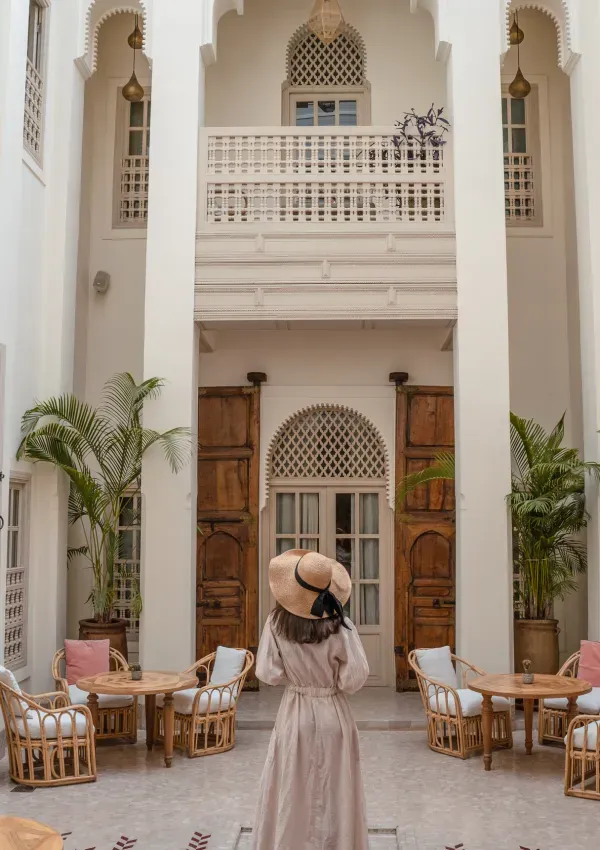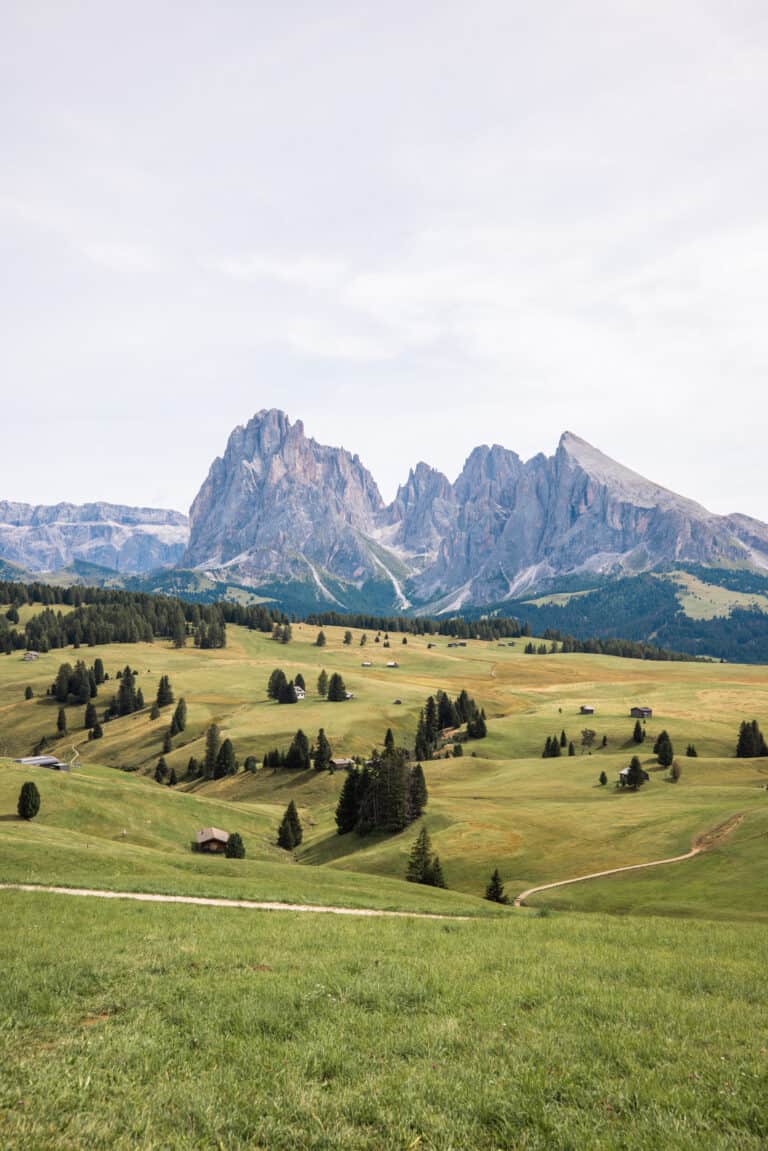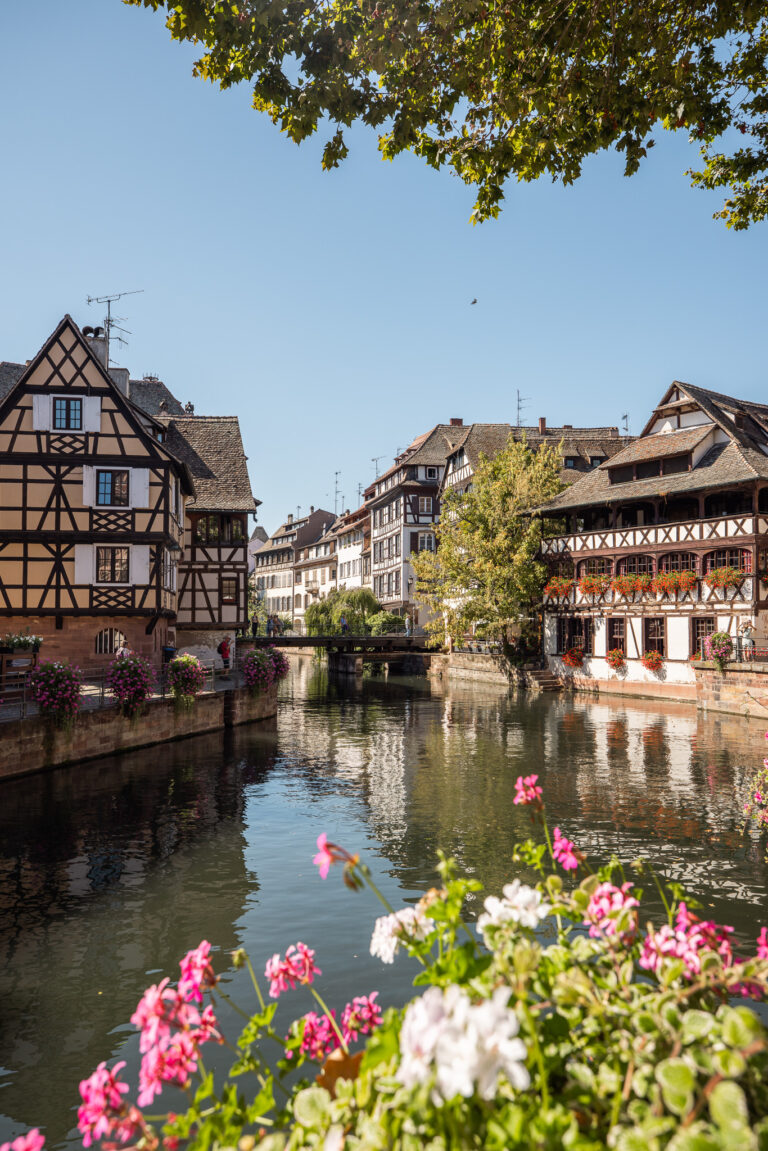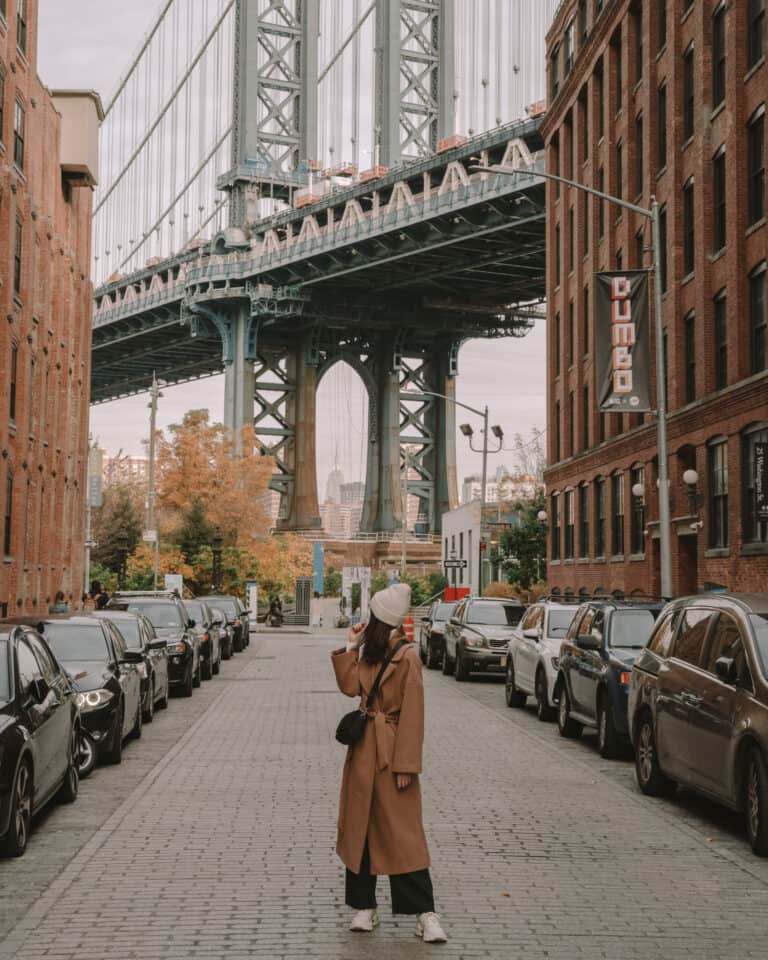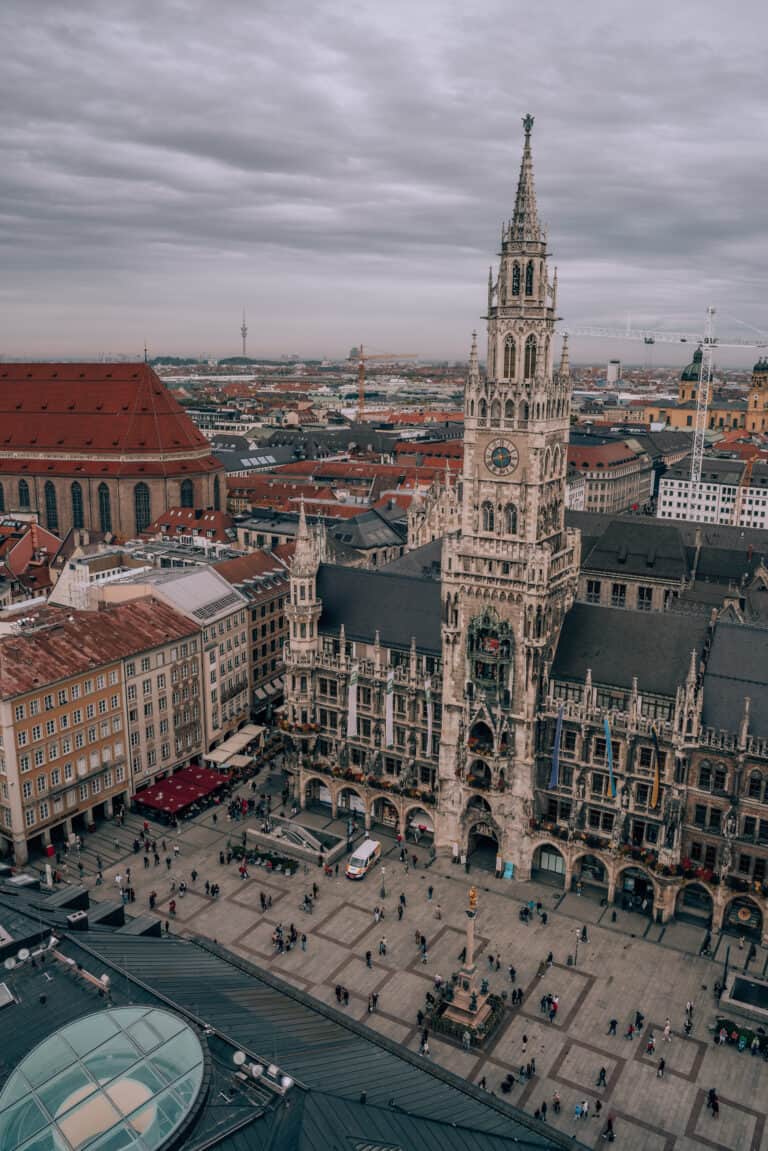Planning a trip to Ireland and wondering “is Dublin worth visiting?” I’ve recently got back from a weekend in the city, and I’ll cover everything you need to know in this guide.
The first time I visited Dublin I was 18, on a University social trip centered around cheap bars and average food.
I wasn’t enamoured with the city on this visit, I’d conjured up illusions of Ireland from the film “PS, I love you” and I was disappointed when I wasn’t met with rolling green fields and fresh country air.
Obviously I shouldn’t have expected that considering I was visiting a city, but there was something about Dublin that I just didn’t click with immediately.
But last month I was invited back to the city, and I wanted to give it a second chance. After all, it’s a place so many people love, so surely I was wrong about it. I went into the trip with an open mind, and although I was only there for 2 days, I crammed a lot in.
I found great foodie spots, learnt about the history of the city, and enjoyed sights that weren’t on my radar as an 18 year old student.
I’ve found a new appreciation for the city, and I finally understand why people fall for its charm. So if you’re wondering, “is Dublin worth visiting?”, read on to find out why I think it absolutely is.
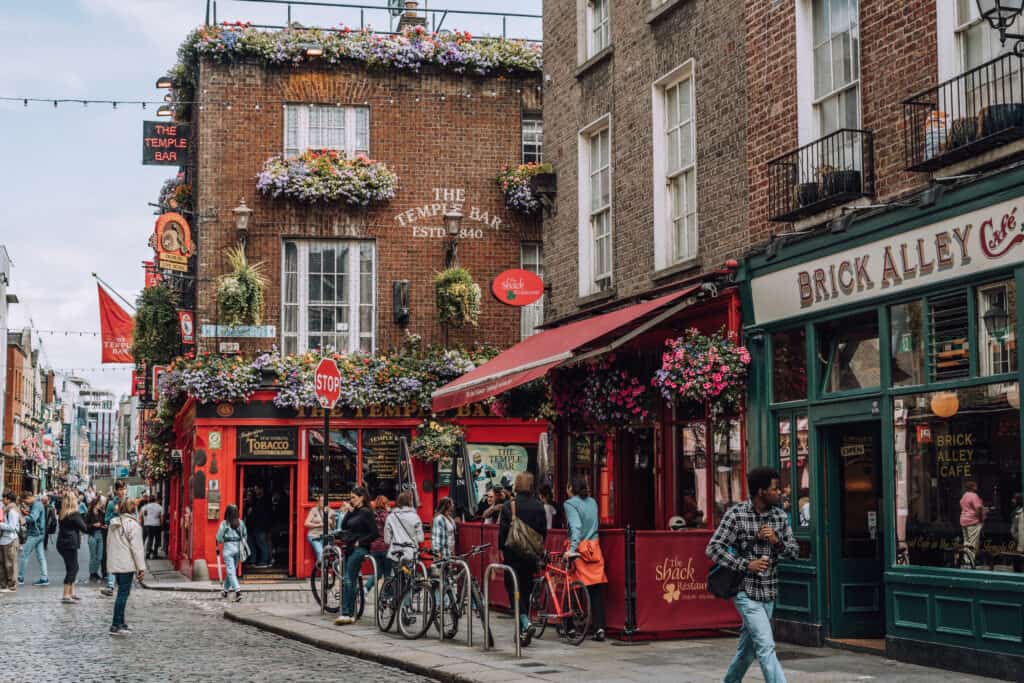
Quick tips for visiting Dublin
Get this: A bus ticket to take you straight into the city from the airport (it’s much cheaper than a taxi)
Don’t miss: The Book of Kells and the Long Room – a magnificent library housing over 200,000 books
Bucket list experience: A visit to the Guinness Storehouse. You’ll learn how to pour your very own pint!
Flights: Find the cheapest flights to Dublin with Skyscanner
Stay: Find the most affordable hotels in Dublin on Booking.com
Is Dublin worth visiting? Quick questions
Is two days in Dublin enough?
Two days in Dublin is enough to see the main sights and enjoy a night out in the city. Take a wander through Temple Bar, visit Trinity College, pour a pint at the Guinness Storehouse and take a photo on Umbrella Street.
Is Dublin cheap or expensive?
Dublin is one of the most expensive cities in Europe, and you definitely notice it, especially if you’re drinking around Temple Bar. If you’re trying to save money, and book your hotel in advance, and only stop for one drink in the touristy areas.
Getting around Dublin
When you arrive at the airport, I’d recommend getting the bus from outside the terminal building. Tickets cost £14 for a return and you can buy them from a kiosk next to the station, using cash or card. It takes about 30 minutes to get into the centre of Dublin and is by far the most cost effective method.
An Uber will set you back around £40 one way.
If you prefer planning in advance, you can buy your bus tickets ahead of time here
Once you’re in the city centre, you can walk most places. But there’s an excellent bus and tram system if you’d prefer to use that.
If I’m visiting a city for the first time, I love to take a walking tour. It’s a great way to familiarise yourself with the sights and learn more about the history.
Search for “free walking tours Dublin” and you’ll find plenty of options. If you prefer a more thorough, personal tour, I’d recommend this private tour run by a local guide. You’ll learn about less well known parts of the city, and pick up a few tips and tricks for your stay.
It’s a brilliant way to see a completely different side to Dublin, and connect with the people that live there.
Is Dublin worth visiting: things to do
Dublin is a really vibrant city, full of history, art, and brilliant pubs. There’s something for everyone here, so read on for my top picks of things to do in Dublin.
1. Trinity College
Trinity College is one of the oldest and most prestigious universities in Ireland. It was founded in 1592, and its alumni includes Oscar Wilde, Samuel Beckett and more recently, Aisling Bea.
The university was established by Queen Elizabeth I, and it’s one of the seven ancient universities of Britain and Ireland, alongside Oxford and Cambridge.
Tourists are able to tour the 47 acre campus, but you’ll need to book a ticket in advance. There’s several tour options available:
- Self-guided tour – Tickets cost £5 and the tour takes 60 minutes
- Guided campus tour – Tickets cost £15 and the tour takes 45 minutes
2. Book of Kells and The Long Room
Whilst you’re visiting Trinity College, make sure you book tickets to see the Book of Kells, a religious manuscript crafted by Celtic monks around 800 AD. It’s one of the most famous artefacts in the world and its housed at Trinity College.
Getting tickets to the Book of Kells also grants you access to The Long Room, an incredible 65-metre long chamber of The Old Library at Trinity College. It was built between 1712 and 1732 and is home to 200,000 of the library’s oldest books.
It’s an absolutely beautiful building and a must visit on your 2 days in Dublin.
Top tip for visiting the Book of Kells: Book your tickets in advance, and select the first visit of the day, which is 08:30am. Arrive at 8am as there’s always a queue, so make sure you’re at the front it. Once the doors open, you can walk through the exhibition to get into the Long Room first. Once it starts to fill up with people, you can always go back to the rest of the exhibition.
These tickets include a guided tour of Trinity College and entry to the Book of Kells and the Long Room
As part of the Old Library redevelopment project, all of the books have temporarily been removed from the Long Room to be be cleaned. This is really important work to stop the books eroding over time as a result of dust and pollution, but it does mean you’re essentially viewing an empty room.
I’d recommend checking before you visit to get the most up to date information about whether the work has finished.
3. Temple Bar
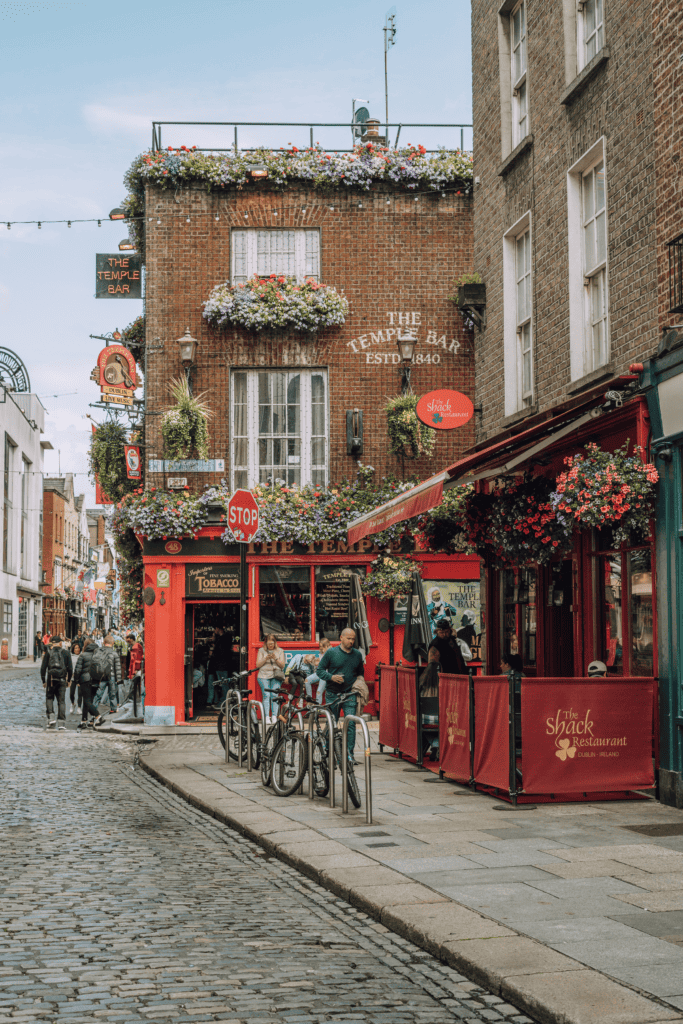

When you think of Dublin, Temple Bar is usually the first place that comes to mind. It’s a must see on your 2 days in Dublin, in fact, you’ll probably end up visiting several times. It’s one of the busiest parts of the city, packed full of theatres, clubs, galleries, restaurants, independent shops and brilliant pubs.
Whilst Temple Bar refers to an area, it’s most famous for the Temple Bar pub, which dates back to the 1800s and is known for its impressive facade – decorated to reflect the season.
It wouldn’t be a trip to Dublin without visiting this pub, there’s traditional live music every day, an extensive whiskey collection and a brilliant pub sandwich menu. But being the most famous pub in the busiest part of the city, a pint here can set you back around £9, so I’d recommend visiting for one drink, just to experience it.
The Temple Bar pub is one of the most photographed places in Dublin, so it does get very busy in the area outside. Contrary to what I’d usually advise for taking photographs, I’d actually avoid heading here early, as the street is full of vans making deliveries. Instead, try visiting just before opening time.
4. Kilmainham Gaol
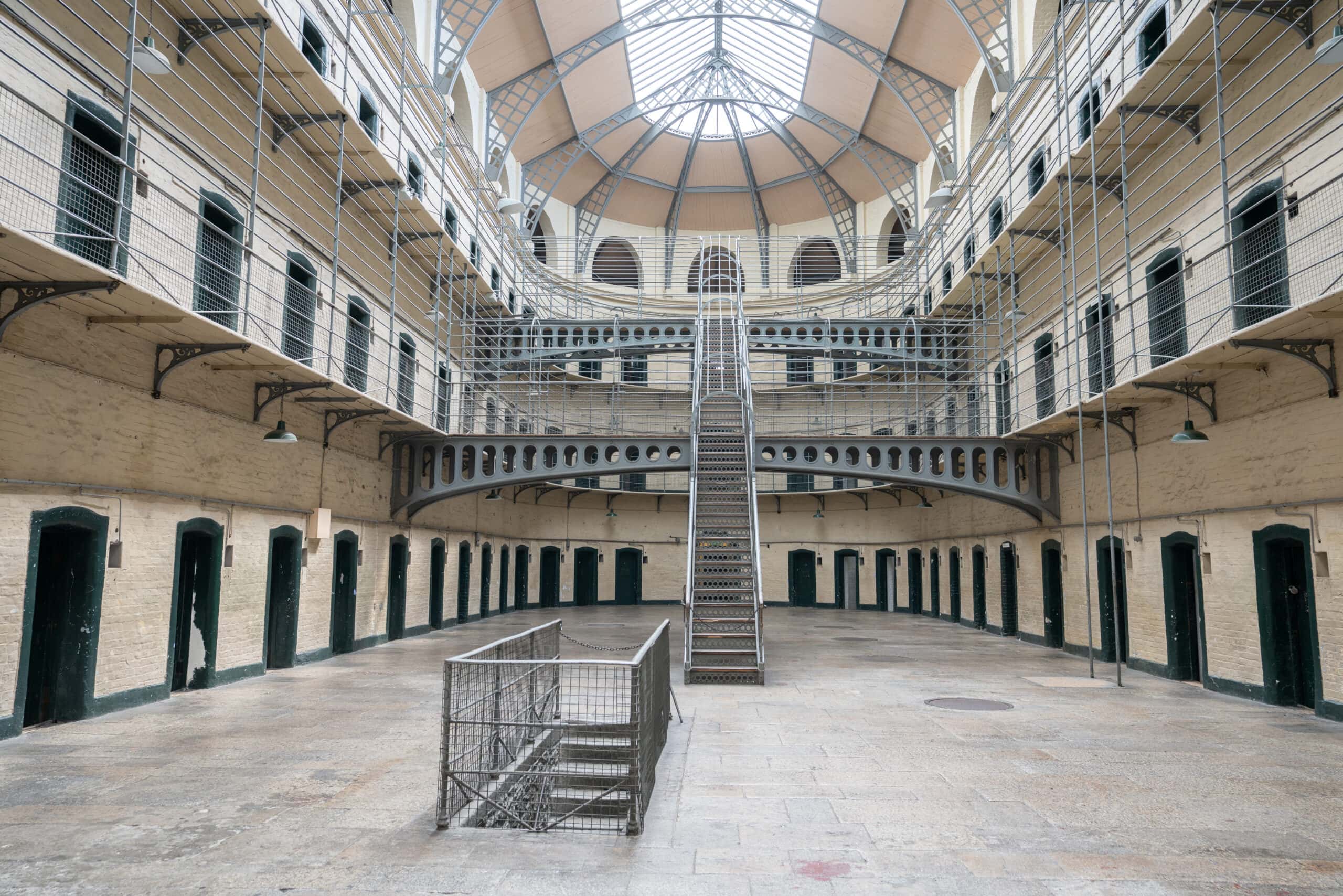
Visiting Kilmainham Gaol was the best thing I did on my 2 days in Dublin. The Gaol was built in 1796 as part of the prison reform movement, which aimed to give prisoners a better quality of life – with single occupancy cells and better ventilation to prevent the spread of disease.
Whilst all sorts of criminals were housed here, it became heavily affiliated with political imprisonment during the 19th and early 20th centuries.
Many Irish nationalist activists, fighting for Irish independence, were held here, with some executed at the prison.
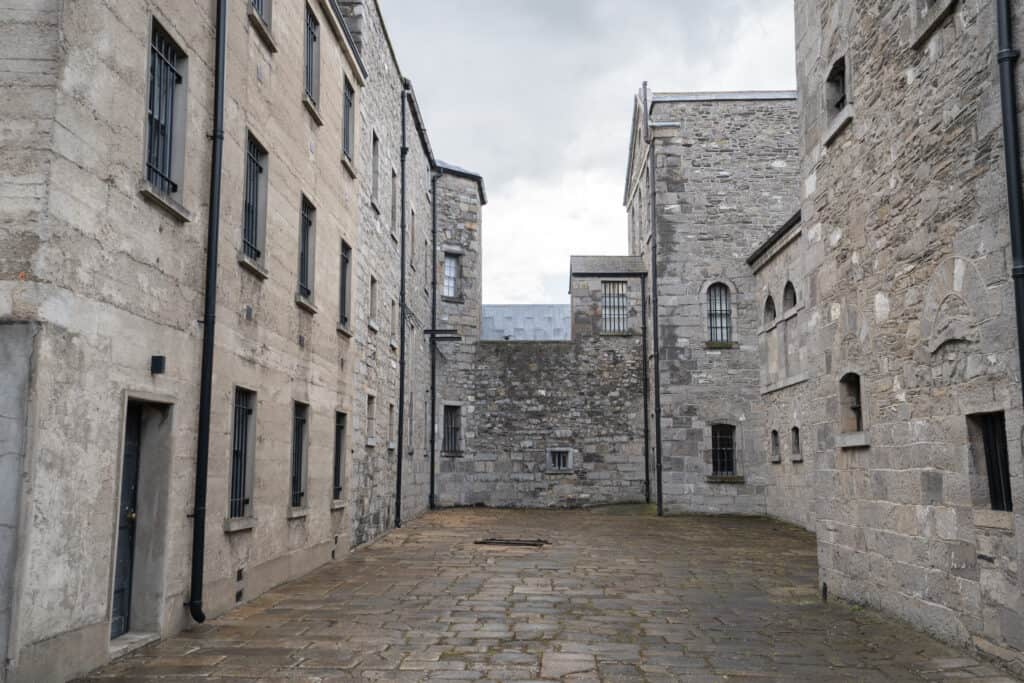
The Gaol plays a huge part in Irish history – as the stories of the persecutions were relayed, public perception shifted. People went from seeing these prisoners as rebels and disruptors, to heroes fighting for a better way of life.
One of my favourite Irish songs, Grace, was written about Joseph Plunkett, a prisoner in Kilmainham Gaol, and his very brief marriage to his lover, Grace Gifford. You’ll learn more about why it was brief on your visit, I don’t want to spoil it for you!
Visiting Kilmainham is a unique opportunity to learn about Irish history, and look inside a former working jail. It’s a must see on your trip to Dublin.
5. Guinness Storehouse
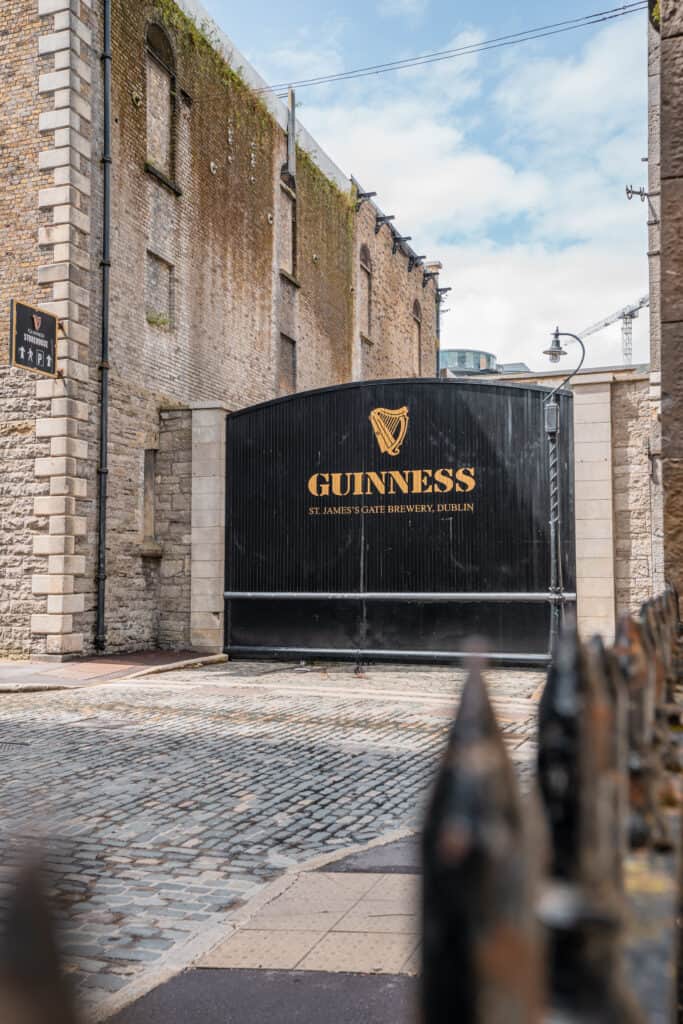

The Guinness Storehouse is undoubtedly the most popular tourist attraction in Dublin, with more than 1million people visiting each year.
It’s a seven-storey interactive experience where you can learn all about Guinness – the history of the drink, how it’s brewed, and even how to pour one yourself!
It’s located at St.James’ Gate Brewery, where Guinness has been brewed since 1759, and the tour is self-guided, which I’m a huge fan of as it allows you to take as much or as little time as you wish.
There’s two restaurants at the Storehouse, as well as plenty of cafe’s scattered throughout the tour. On the top floor you’ll find the Gravity bar, which offers panoramic views over Dublin. Your ticket includes a complimentary pint of Guinness here, and it’s the perfect place to end your tour.
Even if you think you’re not a huge fan of Guinness (I’m not), I’d still really recommend this experience. It’s loads of fun, and the Guinness here tastes loads better than the others I’ve had (probably because you’re right next to the source).
This is Dublin’s most popular tourist attraction, so make sure you book your tickets in advance so you don’t miss out.
6. See a gig at the Guinness Storehouse
For a completely unique experience to Dublin, don’t miss out on the chance to see some incredible artists playing at the Guinness Storehouse.
The performances take part in smaller rooms throughout the building, and it’s a rare opportunity to see big names up close. I was recently invited to watch Kelis play and it was amazing. She’s a brilliant performer, and being able to experience it live with the backdrop of such an iconic building was pretty special.
They’ve also had Bicep and Dermot Kennedy play earlier this summer. These gigs don’t happen often though, so keep an eye out for them during your visit.
7. Old City Wall
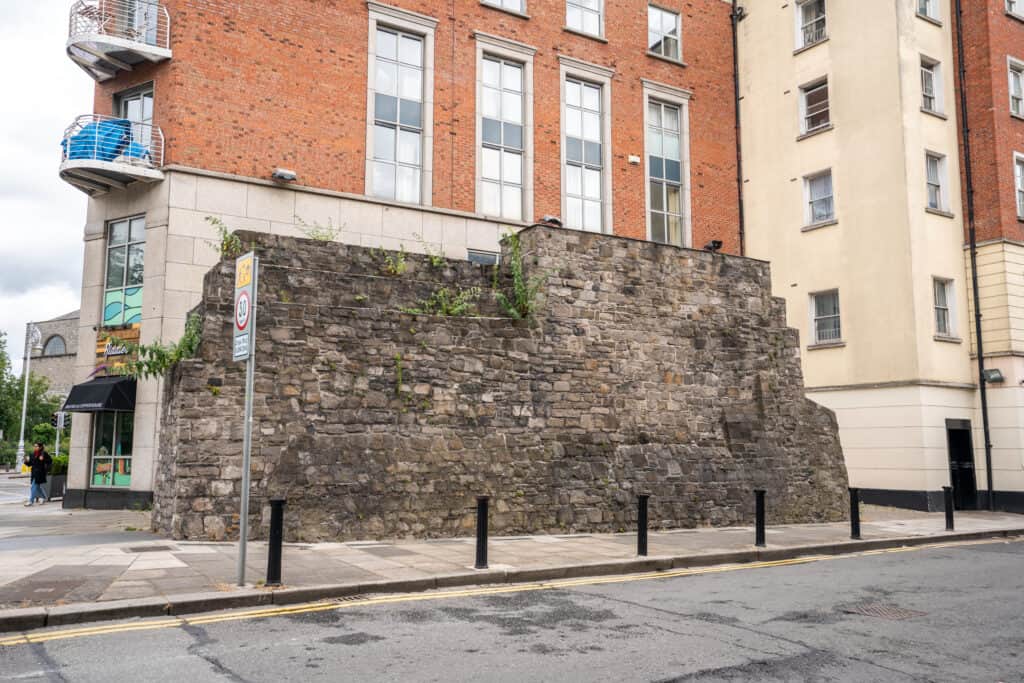
During the Middle Ages, Dublin was surrounded by a wall that served as a barrier to protect the city from attacks. The area inside the wall was less than a square mile, smaller than the city centre you see today.
Over time, as Dublin expanded, parts of the wall were demolished. In the 18th and 19th century, large sections were removed to create space for urban development.
But despite the majority of the wall being removed, some parts are still intact and able to be seen today. You can see a section of wall on Lamb Alley, and whilst you won’t need more than 5 minutes here, it’s a really interesting piece of history. I’d definitely recommend a visit at some point during your visit.
8. Christ Church Cathedral
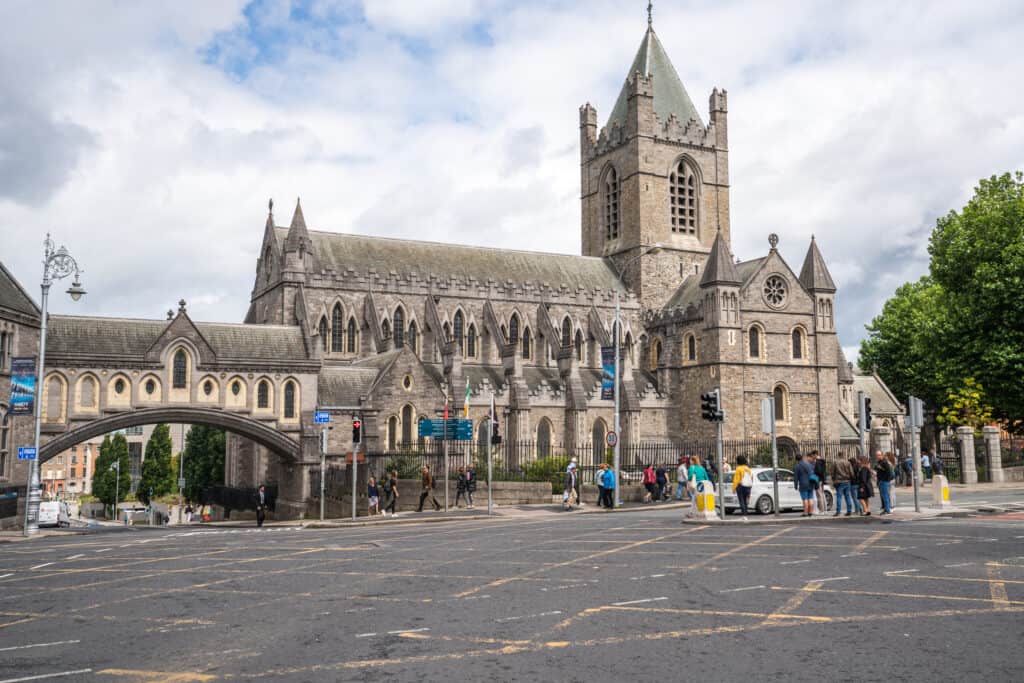
Christ Church Cathedral is the oldest of the city’s two medieval cathedrals – the other being St.Patricks. It was founded in 1030 and was originally a Viking church.
Its stood at the heart of Dublin for around 1,000 years, and is home to the famous 12th-century crypt, the largest one in Britain or Ireland.
Entry cost £10.50 for an adult and £3.50 for children, which includes an audio guide to give you information about the cathedral and the building.
The cathedral is vast, and one of the most impressive buildings in Dublin, so I’d definitely recommend a visit, even if you just view it from the outside (which is what I did).
9. Umbrella Street
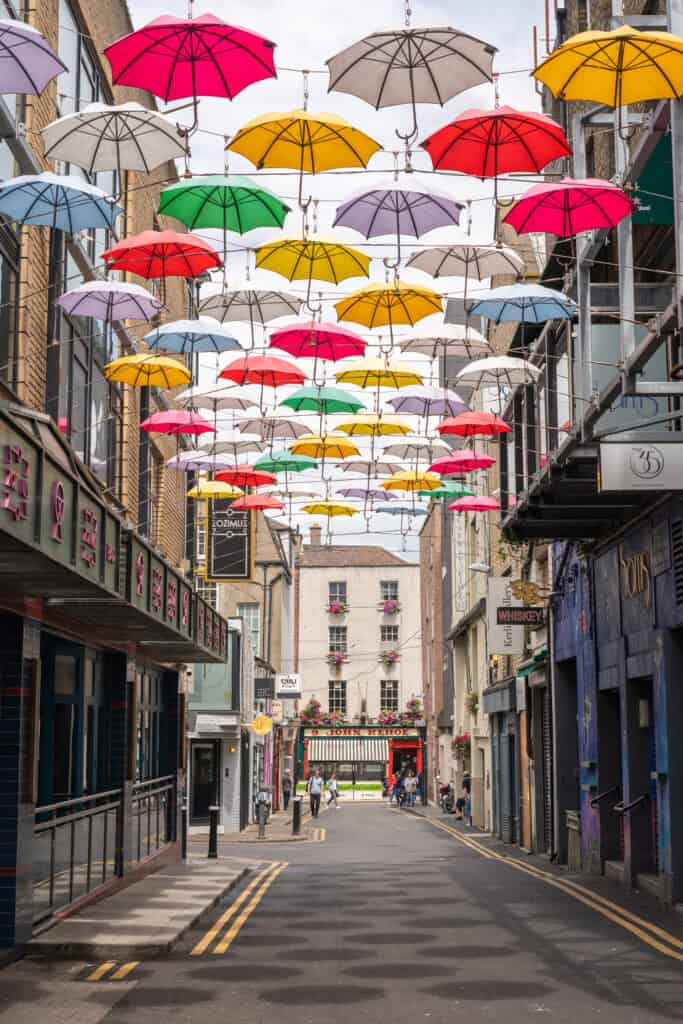

Dublin’s famous Umbrella Street is found on 34 Anne’s Lane in the city centre, and it’s a really fun place to photograph.
The lane itself isn’t the prettiest, but it’s worth a quick visit.
10. Dublin Castle
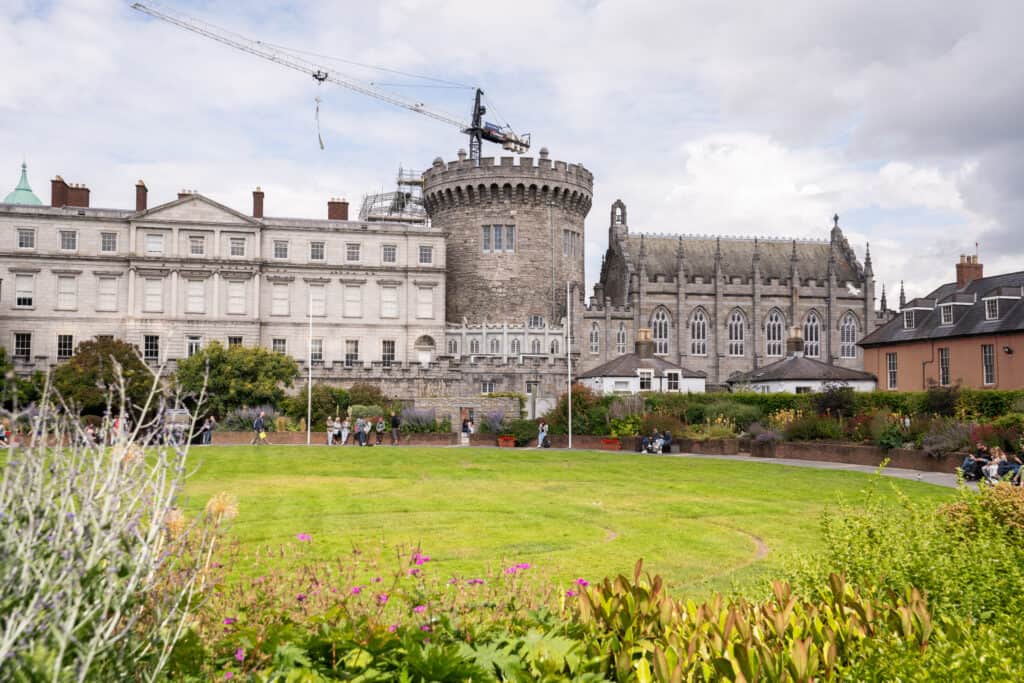
In the centre of the city, you’ll find Dublin Castle. It dates back to the 13th century when it served as a fortress, and is one of the most important buildings in Irish history.
From 1204 – 1922 it was the seat of British rule in Ireland, and served as a residence for the British monarch’s Irish representative.
After a fire in 1684 destroyed a large part of the building, the castle was rebuilt with a Georgian style, and in the early 19th century, a Gothic structure was added. The combination of different architectural styles mean that Dublin Castle feels quite different to other traditional castles you might have visited.
I’d recommend booking tickets in advance so you don’t miss out. You can choose from guided or self-guided tours, which grant you access to the castle and the gardens. If you don’t have castle tickets, you’re still able to visit the gardens for free.
11. Love Lane
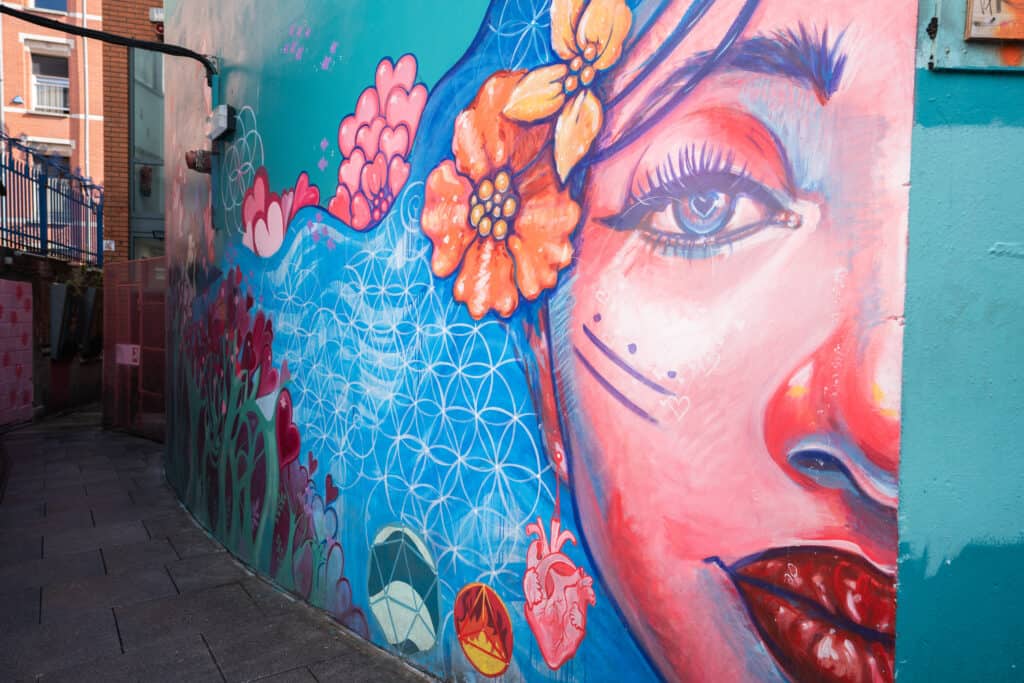
Love Lane is a small alleyway in the Temple Bar neighbourhood. If you didn’t know it was there, you’d definitely walk past it. And even when you do know it’s there, you might not want to walk down it. It’s a little rough round the edges, but it’s worth a quick visit.
The lane is lined with murals and artwork from local artist Anna Doran. The art depicts lyrics, poetry, local figures and funny Irish sayings, and it’s a great photo spot.
12. St Patrick’s Cathedral
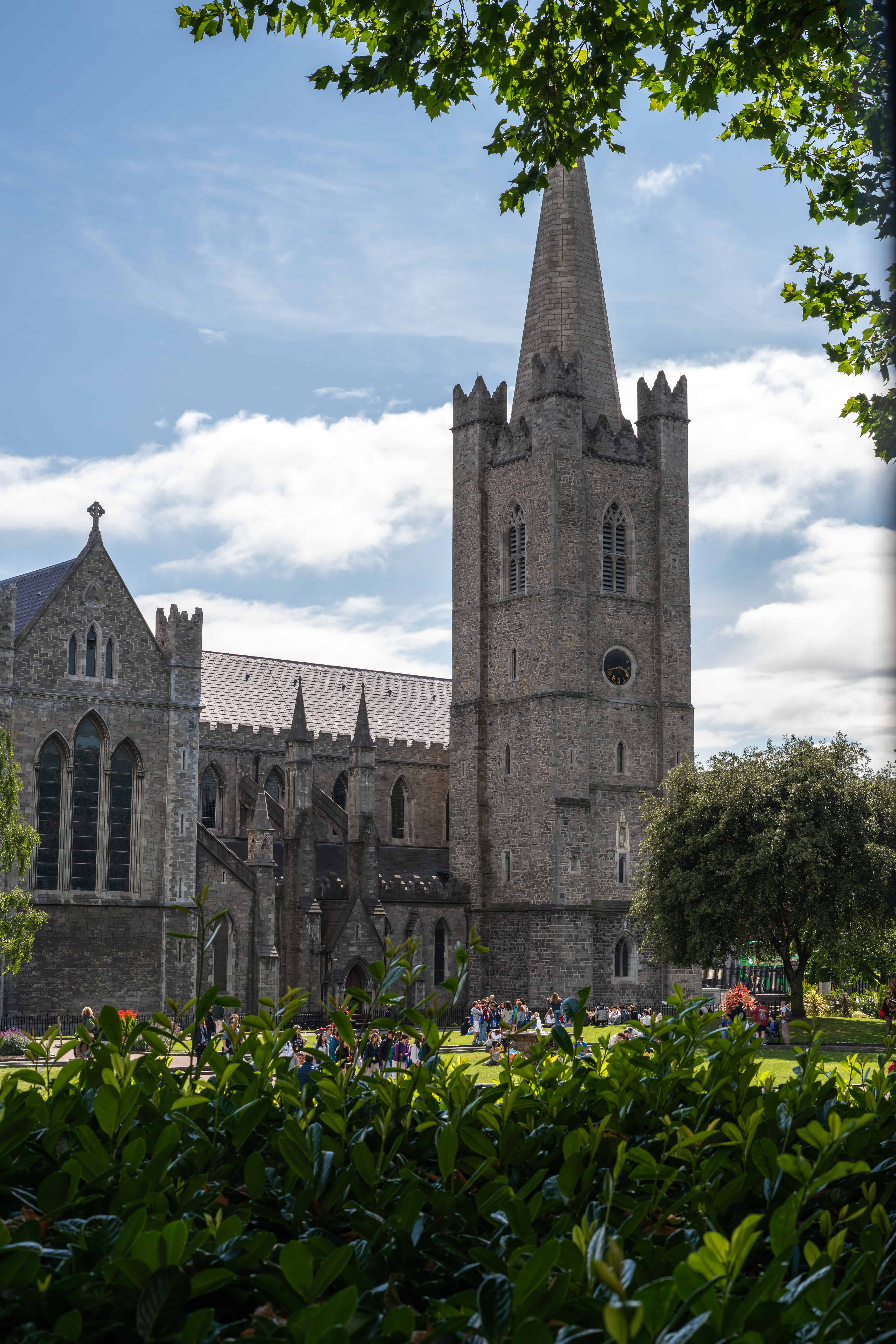

St.Patrick’s Cathedral is Dublin’s other medieval cathedral, founded in 1191, and currently the national cathedral of the Church of Ireland.
It’s one of the few buildings left from medieval Dublin, and one of the most popular attractions in the city.
The cathedral sits in St.Patrick’s Park, which is a beautiful place with immaculate gardens, so I’d recommend leaving enough time to visit both the cathedral and the grounds.
In the corner of the park, you’ll find the Tram Cafe, which is a great spot to grab a toasted sandwich and a coffee and enjoy the gardens.
13. Phoenix Park
If you fancy escaping the hustle and bustle of the city centre, head to Phoenix Park. It’s one of the largest enclosed city parks in Europe, covering over 1,700 acres.
The park was originally created in the 17th century as a deer park for King Charles II, and opened to the public in 1747.
There’s still over 600 deer living in the park now, and it’s an amazing place to visit if you’re in Dublin. Buses run regularly from the city centre to Phoenix Park, and take around 15 minutes.
14. Ha’penny Bridge
The Ha’penny Bridge, known officially as the Liffey Bridge, is a pedestrian bridge that crosses the River Liffey. It was built in 1816 and was originally known as the Wellington Bridge, after the Duke of Wellington.
It got the nickname “Ha’penny Bridge” from the half penny toll that you had to pay to cross it until 1919. It’s a lovely spot to admire views over the River Liffey and across the city.
15. Grafton Street
Grafton Street is the most famous shopping street in Dublin, and one of Europe’s busiest. It dates back to the 18th century and is associated with many significant events in Irish history.
There’s a wide range of shops here, selling everything from clothes, jewellery, books and souvenirs. And it’s also well known for its street performers and buskers. It’s well worth paying a quick visit on your trip to Dublin.
Is Dublin worth visiting: the food scene
The food scene in Dublin is brilliant, there’s lots of independent coffee shops, restaurants and wine bars. Here’s a few recommendations for your trip:
- Bread 41
- As one
- Panem
- Uno Mas
- Blazing Salads
- Fallon and Byrne food hall
- Loose canon
- Bunsen
- Pickle
- Kaph coffee
- Grano
- Chapter One
- Liath
- Nannetti’s
- Fish shop
- Bastible
Is Dublin worth visiting: accommodation choice
Dublin doesn’t have the same choice of boutique hotels as other European cities I’ve visited, but there are a few that are worth considering:
Locke Hotels

Locke Hotels is one of my favourite hotel brands, with locations in some of my favourite cities across the UK. They’re design-led, and the perfect blend between a hotel room and serviced apartment. The interiors are seriously stunning with bedrooms much larger than the average.
They have two locations in Dublin, Zanzibar Locke and Beckett Locke, and your choice will come down to location.
Zanzibar Locke is more central, just a short walk from Temple Bar, whilst Beckett Locke is further out, in the residential district of Point Village.
Both hotels are beautiful, and would make an excellent choice for your trip to Dublin.
Wren Urban Next
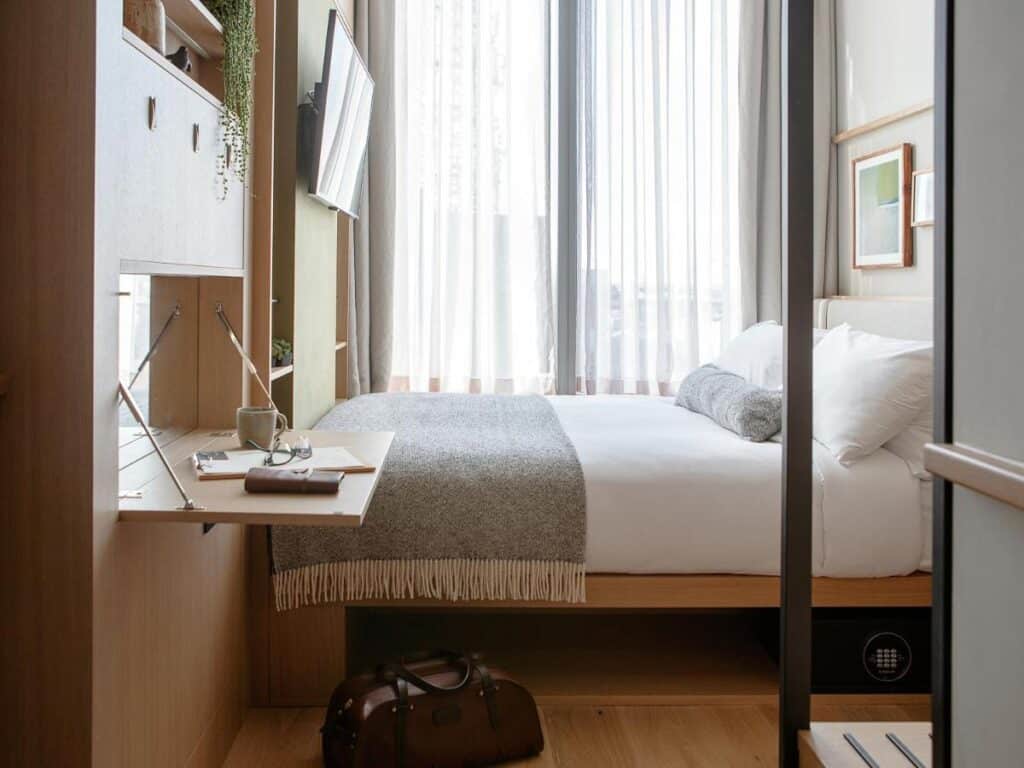
If you’re on a tighter budget, Wren Urban Nest is a brilliant choice. There’s 137 (very snug) bedrooms, with not much room for anything besides sleeping. But they’re well designed, and have air conditioning, a private bathroom and a safe.
The hotels central location is perfect for a quick visit to Dublin, just a short walk from Temple Bar, Trinity College and Grafton Street. It also has an onsite restaurant serving breakfast, lunch, dinner and cocktails.
The Hoxton
Later this year a Hoxton hotel will be opening in the city – one of my favourite hotel brands. They’re known for their impeccable design, great food and helpful perks such as flexy time, allowing you to check in and check out whenever you want. If you’re planning a visit later this year, I’d keep an eye out for their introductory deals.
Is Dublin worth visiting: the cost
Dublin is one of the most expensive cities in Europe, so be prepared for this when you visit. A pint in Temple Bar can set you back around £9, which is even more than London.
For me, this is the biggest downside of the city. Even substandard hotels are pricey, and there’s nothing I hate more than paying over the odds for rubbish accommodation. But, I found entry to the tourist attractions to be reasonable, so there are ways to do it on a budget.
If you’re visiting for a weekend of drinking in Temple Bar, you’re going to spend a lot of money. But if you’re more interested in seeing the sights, and admiring the pubs from the outside (they’re actually very pretty), then you might not find it as bad.
So, is Dublin worth visiting?
Despite the hefty price tag, Dublin is undoubtedly worth a visit. It’s packed full of history, culture, excellent eateries, and beautiful bars.
There’s so much to see, from the iconic Guinness Storehouse, to the deers at Phoenix Park. There’s something for everyone here, and there’s plenty to discover whether you’re visiting for a week or a weekend.
